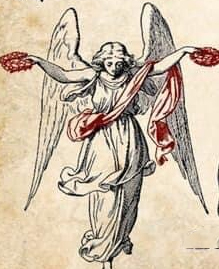Angels have been a topic of fascination for many people throughout history. From their appearances in religious texts to their portrayal in popular media, these celestial beings have captured the imagination of countless individuals. One of the nine orders of angels is the Principalities, also known as the Princedoms. In this article, we will explore the world of the Principalities and delve into their nature, history, and cultural significance.
Who are the Principalities?
The Principalities are one of the nine orders of angels in Christian theology. They are said to be responsible for governing and guiding the activities of various groups, such as nations, cities, and religions. The Principalities are considered to be a higher order of angel than the Archangels, but lower than the Seraphim and Cherubim. They are also believed to possess a great deal of knowledge and wisdom, which they use to help humanity.
The Nature of the Principalities
The Principalities are often depicted as majestic beings with great power and authority. They are said to have the ability to inspire and influence the minds of mortals, helping to guide them towards the right path. The Principalities are also known for their deep compassion and their desire to help those in need.
One of the defining characteristics of the Principalities is their strong sense of purpose. They are said to be highly focused on their duties and responsibilities, always striving to fulfill the will of God. This single-mindedness has earned them the nickname of the “Watchers,” as they are constantly observing the world around them, seeking to understand how best to serve humanity.
The History of the Principalities
The Principalities have a long and rich history that dates back to ancient times. In Jewish tradition, they were known as the Sarim, or “princes,” and were considered to be the guardians of various nations and territories. The Sarim were said to be powerful beings, capable of influencing the fate of entire nations.
In Christian theology, the Principalities are often associated with the heavenly hierarchy described by the apostle Paul in his letter to the Ephesians. In this hierarchy, the Principalities are said to be responsible for the governance of the world, overseeing the activities of various groups and individuals.
The Cultural Significance of the Principalities
The Principalities have played a significant role in many cultures throughout history. In Christian art, they are often depicted as regal beings, dressed in flowing robes and bearing scepters or other symbols of authority. They are also frequently shown holding globes or other objects, symbolizing their role as governors of the world.
In popular culture, the Principalities have appeared in a variety of forms. In the television series Supernatural, the character Castiel is a member of the Principalities. He is depicted as a powerful angel with a fierce sense of loyalty and a deep desire to help humanity. In the video game series Bayonetta, the character Jeanne is also a member of the Principalities. She is portrayed as a skilled warrior with the ability to control the elements.
The Role of Principalities in Divine Governance
The Principalities are believed to play a crucial role in the governance of the universe, serving as intermediaries between the divine and human realms. They are responsible for the ordering of the cosmos, and work to ensure that the laws of the universe are maintained. As such, they are often associated with concepts such as authority, order, and justice.
In the Christian tradition, the Principalities are often invoked for their guidance and protection. They are believed to be able to provide insights into the workings of the divine, and can help guide individuals towards their true purpose in life. By seeking the guidance of the Principalities, individuals can gain a greater understanding of their place in the universe, and can work towards fulfilling their destiny.
The Significance of Principalities in Art and Literature
The Principalities have played a significant role in art and literature throughout history. They are often depicted in religious art, where they are shown in a variety of forms, from majestic and awe-inspiring beings to more human-like figures. They are also often depicted in literature, where they serve as symbols of authority, guidance, and protection.
One famous example of the Principalities in literature is John Milton's epic poem Paradise Lost. In the poem, the archangel Michael plays a prominent role, serving as a key figure in the battle between good and evil. Michael is depicted as a powerful warrior, who fights valiantly against the forces of darkness.
In contemporary literature and popular culture, the Principalities continue to make appearances. They are often portrayed as powerful and mysterious beings, capable of great feats of strength and wisdom. Whether in religious texts or in works of fiction, the Principalities continue to capture the imagination of people around the world, serving as a reminder of the divine order that governs the universe.
In Conclusion
The Principalities are a fascinating and complex order of angels with a rich history and cultural significance. They are known for their wisdom, compassion, and sense of purpose, and are said to be responsible for guiding and governing the activities of various groups and individuals. Whether in religious texts, art, or popular media, the Principalities continue to captivate and inspire people around the world, serving as a reminder of the power and wonder of the divine.










